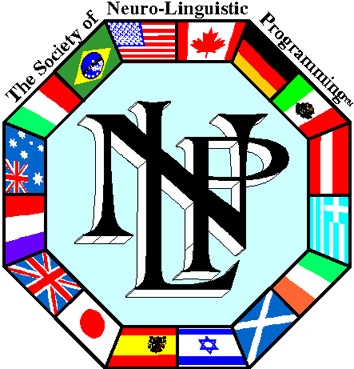NLP techniques for persuasion
The antipodean lilt
NLP techniques for persuasion abound when it comes to dealing with others.
The antipodean lilt, as it has come to be known, may be cool with the young but it won’t get you anywhere when it comes to persuasion.

The most persuasive tool you have in your armoury is that of integrity
Zig Ziglar
In case you are not familiar with the expression, the antipodean lilt occurs when you allow your voice to rise at the end of a sentence.
When you say to a friend or colleague, “I’m travelling to New York” permitting your voice to rise on the words “New York” in a questioning manner, it sounds as if you are unsure about your intention.
If instead you allow your voice to drop on the words “New York”, it sounds more like a command and gives the listener confidence in what you are about to do.
NLP techniques for persuasion – embedded commands
You may have read about embedded commands elsewhere on this site.
If a friend says to you, “Let’s have another drink” it is more difficult to resist than “Do you want another drink?”
Although the first form is polite enough, it speaks to you more as a command and unless you are feeling very strong is harder to resist.
In the second form it is a question, and immediately you are called upon to make a choice.
Properly trained restaurant waiters know the way to get you to buy.
When you order your steak and fries, they ask “What would you like to start with?” Most people’s eyes then flick to the menu.
Even if they decide not to have a starter, at the very least it makes them think about it.
Compare that with “Do you want a starter?” or, even worse, “No starter?” Neither of those questions contains persuasive language.
NLP techniques for persuasion – restricting the choice
The good waiter inevitably follows up with: “Red or white wine?” or “Which wine would you like?”
Those questions give the illusion of choice but really limit your response only to the type of wine you wish to order.
The opposite of that is “Do you want anything to drink?” or “Would you like any wine?” both of which are easy to answer with a No.
Of course, you are not bound to agree because the waiter puts his question in a persuasive form, but he (and those who trained him) know that it is more difficult for you to resist the suggestion he makes.
NLP techniques for persuasion – children
If you are a parent you will know some of the tricks already. Be prepared to use them in other circumstances.
When your child is reluctant to go up the stairs as evening falls, you will say something like “Would you like me to read you a story when you have your PJs on?”
The only choice for the child in that question is whether she would or wouldn’t like to have a story. Getting the PJs on is taken for granted.

NLP techniques for persuasion – I could but I’d rather not
If I were a betting man I would bet money that you or your partner has used this technique before. Maybe you are both going out to dinner but one of you has to drive.
You know that after you have had a couple of drinks it wouldn’t be safe to be behind the wheel, so before you leave for the evening you say, “I am happy to drive, if you want” (raising the pitch on the words “if you want”).
By altering your tone in this way, your partner feels the need to say “No, of course not; I will drive.”
Alternatively, you might say, “I am perfectly happy to drive to the restaurant” which plants in the other’s mind immediately that they will be the one driving home.
It is a cynical approach to take with the one you love, and I am sure you wouldn’t do it in those circumstances.
NLP techniques for persuasion – “and” versus “but”
“But” is far more powerful than you would imagine for a three-lettered word. It is an opinion changer. Beware of the words that follow.
If I tell you, “My daughter is extremely good at her job but she is rarely punctual” you may think she is not a good candidate for a position at your firm because she is usually late turning up.
If, on the other hand, I tell you, “My daughter is rarely punctual but she is extremely good at her job” the punctuality seems to diminish in importance compared with her ability to do the job.
Try this exercise with a friend. One of you begins a conversation with a sentence about anything.
The second person adds a sentence of her own but starts with the word “and”.
Then the first person continues the conversation with another sentence beginning with “and”.
Continue talking for several sentences each but make sure that each sentence starts with “and”.
Now try the exercise a second time but instead of starting the second and succeeding sentences with the word “and” use the word “but” and consider for yourselves how much different you feel about it.
I guess the “and” sentences will generally make you feel upbeat, and the “but” sentences will seem so negative.
NLP techniques for persuasion – what they really want
Oftentimes it is difficult to get people to disclose to you what they are really seeking. But there is no need to guess.
Handled properly, they will tell you everything you need to know and then you can gear your pitch towards that.

Generally, when you ask someone what they want they will tell you what they don’t want. Gently turn the conversation round.
Say words to the effect: “Well, ideally, if there were no constraints on size or price, what would you really like?” When you do that, they go inside themselves.
It is a form of hypnotism because they have to search, and when they search they make pictures which they then describe to you.
Perhaps you have been discussing holidays with your partner and when you ask him where he wants to go he says, “I really don’t know”.
But deep down inside he does. If you say, “If money and distance were no object, what would you like to do?” he will come up with something, and then you can begin to tailor your response to the price and distance you can afford and travel, and at the same time take on board the aspects of a holiday he would really like.
None of these techniques is guaranteed or fool proof but they all load the dice in your favour!
Gain FREE access to my self-confidence video
To gain free access to my self-confidence video enter your email address and first name in the box below. This will also keep you up-to-date with my free newsletter Inspirations.
As a bonus for subscribing you'll receive the first three chapters of my book Towards Success, where you can learn more about NLP techniques, from Anchors to Modelling, and my 50 favourite inspirational quotations.
Return from NLP techniques for persuasion to
The Secret of Mindpower & NLP Home
Return to Site Search & Contents Page

Change your life in just 5 weeks
Discover the pathway to success with my online video course. Learn more

Download NEW ebook Your Genius Within and find out how to uncover your own inner genius

NLP Articles
- Anchors
- Anchors explained
- Anger Management tips
- Anxiety Panic Attacks
- Beating disappointment
- Beating drug addiction
- Best self-help book
- Big events
- Body control module
- Body language attraction
- Body language flirting
- Body language in communication
- Body language interpretation
- Body language of a liar
- Body language signs
- Boost self-confidence
- Building Rapport
- Changing bad habits
- Changing beliefs
- Changing States
- Children
- Christmas (Holidays)
- Christmas & New Year greetings
- Chronic pain management
- Conquering Fear
- Crohn's Disease
- Cure for a Phobia
- Deal with your fear
- Deletion
- Determining your destiny
- Developing your senses
- Disaster to Triumph
- Distortion
- Drawing the line
- Embedded Commands
- Enthusiasm
- Exams
- Expecting the Best
- Expert Relationship Advice
- Eye accessing cues
- Fear of driving
- Fear of elevators
- Fear of flying
- Fear of the dentist
- Fear of vomiting
- Fear, Mental Blocks & Hesitation
- Fear, Uncertainty and Doubt
- Fight or flight response
- Finding Solutions
- Forever Worried?
- Friendly persuasion
- Generalisation
- Get the life you want
- Getting lucky
- Getting over your past
- Goal Setting Tips
- Goal Setting Tools
- Goal Setting Tools, More
- Great self-help books
- Grief
- Happy retirement
- Healthy Mind
- High blood pressure
- How long will I live?
- How to be lucky
- How to read body language
- Hypnosis & NLP
- Hypochondria
- Imagining perfect performance
- Improving speed reading
- Instant Mood Lift
- Interviews
- Knowing yourself
- Learn NLP
- Life Values
- Maintaining weight loss
- Make you thin
- Making it happen
- Managing change
- Meddling Mom
- Meeting People
- Mental rehearsal techniques
- Meta Model
- Metaphor
- Modelling
- Modelling Genius
- More NLP techniques for weight loss
- NLP Books
- NLP Courses
- NLP Practitioner Course
- NLP Master Practitioner Course
- NLP Secret
- NLP jargon buster
- NLP Modelling helped me
- OCD symptoms
- OCD treatment
- Overcoming low self-esteem
- Overcoming stage fright
- Pacing & Leading
- Persuasion
- Presuppositions
- Presuppositions (2)
- Problem solving
- Public Speaking
- Reaching agreement
- Reframing
- Self-confidence
- Self limiting beliefs
- Self-image
- Sportsmen Guide
- Stage fright tips
- Stammering
- States
- Stop binge eating
- Stop Smoking
- Subliminal Persuasion
- Success Principles
- Techniques for persuasion
- Techniques for weight loss
- The meaning of NLP
- Time & NLP
- Towards
- Towards & Away
- Ulcerative colitis
- Weight Loss
- Weight loss techniques
Articles on HYPNOSIS:
- Big events
- Conversational Hypnosis
- Covert hypnosis
- Deepening self-hypnosis
- Depression Hypnosis
- Handshake interrupt
- How to do self-hypnosis
- How to hypnotise your audience
- Hypnosis and Weight Loss
- Hypnosis NLP
- Hypnosis: Right or Wrong
- Hypnosis Stories
- Hypnotic language
- Hypnotism Stories
- Hypnosis story for you
- Hypnosis to quit smoking
- Instant self-hypnosis (age regression)
- Practical self-hypnosis
- Self-Hypnosis
- The Milton Model
Articles about THE SECRET of:
- Abundance Mentality
- Achieving more
- Beating Domestic Violence
- Being bothered
- Being Happy
- Best Self-help Book
- Conquering road rage
- Coping with criticism
- Dealing with pride
- Defeating stress
- Discover the secret of wealth
- Genius
- Getting off to sleep
- Getting over a break up
- Getting over your temper tantrum
- Health
- How to deal with grief
- Imagination
- Influence
- Love
- Making Money
- Managing others
- Memorising a Deck of Cards
- Memory
- My Success
- Organising Memory
- Overcoming tiredness
- Overcoming worry
- Perpetual energy
- Remembering
- Secret Law of Attraction books
- Sleeping well
- Speed Reading
- Super Memory
- Surviving a recession
- Surviving negativity
- The Secret Law of Attraction
- Towards
- Teachers of the Secret
- Waiting for God
- Wealth Building
- Weight Loss
Articles about COACHING:
- Barriers to effective communication
- Communication
- Executive Business Coaching
- Feedback
- Free interview tips
- Free Life Coaching
- Goal Setting Tips
- Goal Setting Tools
- Goal Setting Tools, More
- Life & Executive Coaching
- Personal Development Plan
- Problem solving
- Success Principles
- The Secret of my Success
- Time Management
Articles on GENIUS and MIND POWERS:
- Activating genius
- Become a genius
- How long will I live?
- Mind Powers
- Misty Reflections
- Modelling Genius
- The Secret of Genius
Articles about MEMORY:
Articles about RELATIONSHIPS:
- Beating domestic violence
- Body language flirting
- Expert relationship advice
- Healthy family relationships
- Hurt feelings
- Love
- Relationship problem advice
- Signs of true love
- The secret of getting over a break up
Articles on WEALTH:
Articles on WEIGHT LOSS:
- Best Weight Loss Plan
- Body control module
- Easy weight loss
- Hypnosis and Weight Loss
- Maintaining weight loss
- More NLP techniques for weight loss
- NLP techniques for weight loss
- NLP techniques to make you Thin
- NLP weight loss techniques
- Stop binge eating
- The Secret of weight loss
- Weight control help
- Weight loss tips
- Why have I lost weight?
Articles on SECRET and INSPIRATIONAL TEACHERS:
- Bill Harris
- Bob Proctor
- Dr John F DeMartini
- Hale Dwoskin
- Jack Canfield
- Joe Vitale
- John Assaraf
- Lisa Nicholls
- Michael Bernard Beckwith
- Stephen R Covey
Real Women of Genius Articles:
Real Men of Genius Articles:
- Abraham Lincoln
- Albert Einstein
- Antoni Gaudi
- Carl Jung
- Charles Darwin
- Charles Dickens
- Christopher Wren
- Confucius
- George Washington
- Hannibal
- Horatio Nelson
- Isaac Newton
- Julius Caesar
- Lawrence of Arabia
- Leonardo da Vinci
- Michelangelo
- Mohatma Gandhi
- Napoleon Bonaparte
- Nicolas Copernicus
- Oscar Wilde
- Rembrandt
- Robert Burns
- R L Stevenson
- Socrates
- Walt Disney
- William Shakespeare
- Wolfgang Amadeus Mozart








New! Comments
Have your say about what you just read! Leave me a comment in the box below.